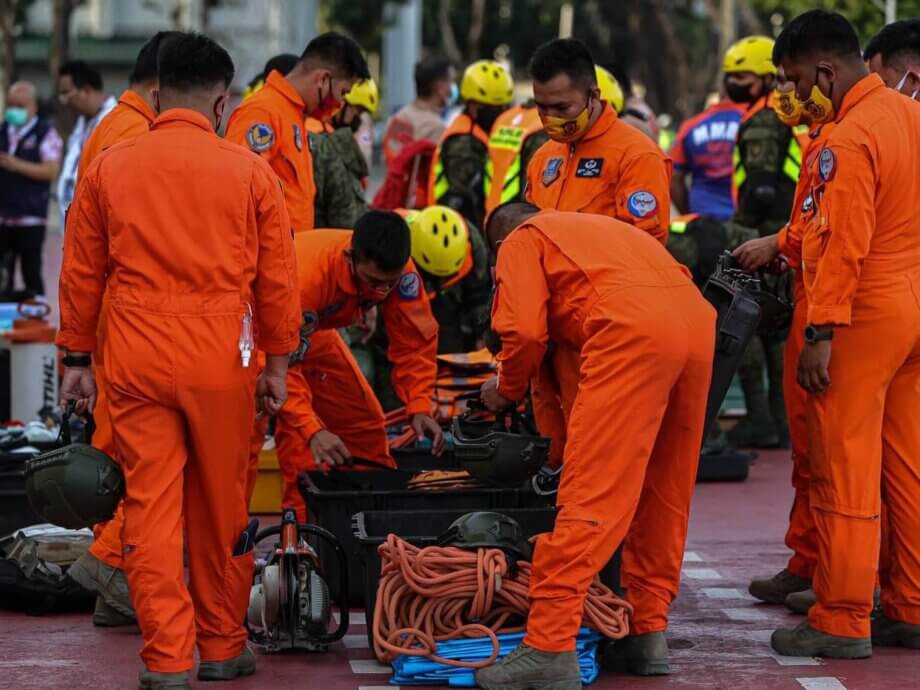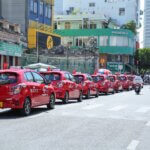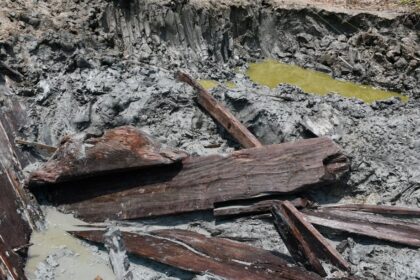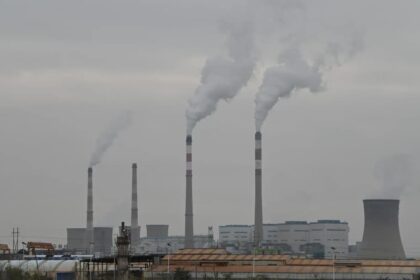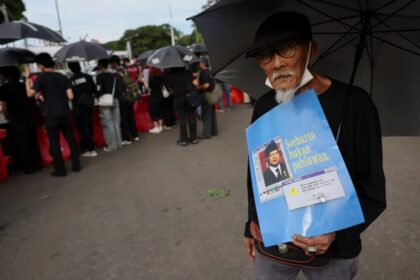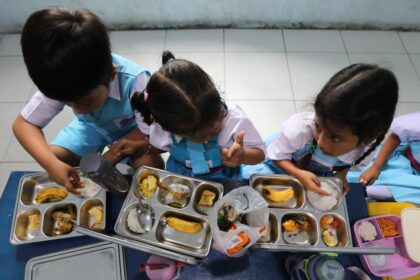Philippines Steps Up Disaster Preparedness: Progress, Challenges, and the Road Ahead
The Philippines, long recognized as one of the world’s most disaster-prone countries, is making significant strides in disaster preparedness and resilience. Recent government initiatives, technological advancements, and community-driven programs are transforming the nation’s approach to managing natural calamities. However, as new data and expert analysis reveal, much work remains to ensure that all Filipinos are adequately protected from the increasing threats posed by climate change and extreme weather events.
- Philippines Steps Up Disaster Preparedness: Progress, Challenges, and the Road Ahead
- Why Disaster Preparedness Matters in the Philippines
- From Reactive to Proactive: Shifting the National Strategy
- Measuring Progress: What the Data Shows
- Harnessing Technology for Disaster Risk Reduction
- Community-Led Resilience: The Grassroots Perspective
- International Support and Financial Investments
- Challenges and Areas for Improvement
- Policy Directions and the Role of Government
- Looking Ahead: Building a Culture of Preparedness
- In Summary
Why Disaster Preparedness Matters in the Philippines
Located along the Pacific Ring of Fire and in the path of the world’s most active typhoon belt, the Philippines faces a unique set of natural hazards. Each year, the country experiences an average of 20 tropical cyclones, frequent earthquakes, volcanic eruptions, floods, and landslides. According to the 2024 World Risk Report, the Philippines ranks highest in disaster risk out of 193 economies, with over 60% of its land area and nearly three-fourths of its population exposed to multiple hazards.
These risks are compounded by climate change, which is intensifying storms, raising sea levels, and causing erratic weather patterns. The economic and human toll is immense: Super Typhoon Haiyan (Yolanda) in 2013 alone affected more than 14 million people, displaced 4.1 million, and caused over $5.8 billion in damages. The need for robust disaster preparedness is not just a policy imperative—it is a matter of national survival.
From Reactive to Proactive: Shifting the National Strategy
Historically, disaster management in the Philippines was largely reactive, focusing on emergency response after calamities struck. In recent years, however, the government has shifted toward a more proactive, risk-based approach. This transformation is evident in several key areas:
- Early Warning Systems: Investments in advanced monitoring and alert systems, such as the PhilAWARE platform and the HazardsHunterPH app, are enabling authorities and citizens to receive real-time hazard information and act swiftly.
- Science-Based Planning: The Department of Science and Technology’s GeoRiskPH platform provides local governments with detailed hazard maps and risk assessments, supporting evidence-based decision-making for infrastructure and land use.
- Capacity Building: Programs like Ready to Rebuild, developed with support from the World Bank, train local officials in disaster rehabilitation and recovery planning, ensuring that communities can “build back better” after disasters.
These efforts are complemented by policy reforms, such as the harmonization of disaster risk reduction and management (DRRM) planning at national and local levels, and the integration of DRRM into public financial management systems.
Measuring Progress: What the Data Shows
To assess the impact of these initiatives, the Harvard Humanitarian Initiative (HHI) conducted a nationwide survey in early 2024, involving over 4,600 Filipinos across all regions. The findings are both encouraging and sobering:
- Preparedness Up by 42%: Filipinos’ self-reported disaster preparedness level has increased by 42% over the past seven years, rising from an average score of 13.5 out of 50 in 2017 to 19.2 in 2024.
- Information Access Strongest: The highest scores were in information preparedness (4.9 out of 10), reflecting widespread awareness of typhoon warnings and rainfall systems.
- Social Support Lagging: The lowest scores were in social support (2.3 out of 10), indicating limited participation in community groups and low familiarity with local disaster officers.
While most Filipinos (87%) safeguard important documents and many monitor disaster warnings (70%), fewer have taken concrete steps such as preparing a family disaster plan (20%), assembling a “Go bag” (27%), or maintaining a first-aid kit (33%).
Regional Disparities in Preparedness
The survey also revealed significant regional differences. The Cordillera Administrative Region, Central Visayas, and Western Visayas reported the highest preparedness scores, while the Bangsamoro Autonomous Region in Muslim Mindanao (BARMM), Negros Island, and Davao Region lagged behind. Metro Manila, despite being the economic and political center, ranked only 11th out of 18 regions and showed one of the slowest rates of improvement.
Socioeconomic Factors at Play
Preparedness levels are closely linked to education and wealth. Filipinos with higher education and greater financial resources are more likely to engage in disaster preparedness activities. This underscores the need for targeted support to vulnerable and marginalized communities.
Harnessing Technology for Disaster Risk Reduction
Technological innovation is at the heart of the Philippines’ evolving disaster management strategy. The government, in partnership with international organizations and the private sector, is leveraging digital tools to enhance preparedness and response:
- GeoRiskPH: A web-based platform that centralizes hazard and risk data, enabling local governments to integrate science-based assessments into their DRRM plans.
- Plan Smart Web Application: An automated tool that helps local officials generate rehabilitation and recovery plans using data from GeoRiskPH.
- HazardsHunterPH: A mobile app providing real-time hazard information to the public, empowering individuals to make informed decisions during emergencies.
Marc Rembrandt Victore, Officer In Charge of the Disaster Risk Reduction and Management Division of OCD MIMAROPA, highlights the transformative impact of these tools:
“Modern tools and applications, such as mapping software and the HazardsHunterPH app, are pivotal in assessing and mitigating disaster risks. Technology offers valuable resources for disaster planning and risk management.”
These innovations are not only improving early warning systems but also streamlining communication and resource allocation during crises.
Community-Led Resilience: The Grassroots Perspective
While national policies and high-tech solutions are essential, disaster resilience ultimately depends on the strength and preparedness of local communities. Grassroots initiatives are playing a vital role in bridging gaps and empowering vulnerable populations:
- Community Cash Grants: Programs supported by the United Nations and NGOs provide direct financial assistance to disaster-affected communities, enabling them to rebuild livelihoods and invest in resilience projects.
- Women-Led Organizations: In places like Barangay Calampong, women’s groups have used cash grants to launch livelihood projects, improve food security, and protect productive assets.
- Self-Help Groups and Training: Organizations such as Alight are working with local partners to establish disaster preparedness committees, conduct training on risk reduction, and promote public education, especially in underserved areas.
These community-driven efforts are increasingly being integrated into local development and DRRM plans, ensuring that resilience is built from the ground up.
International Support and Financial Investments
Recognizing the scale of the challenge, international partners are providing substantial financial and technical support to bolster the Philippines’ disaster resilience. In 2024, the Asian Development Bank (ADB) approved a $500 million policy-based loan to provide quick access to financing in the event of disasters. This program aims to:
- Strengthen DRRM policies and frameworks at all levels of government
- Integrate gender equity, disability, and social inclusion into DRRM plans
- Enhance service delivery for disaster response
- Support risk financing mechanisms, such as city parametric disaster insurance
These investments are designed to ensure timely response and recovery, minimize economic disruption, and protect the most vulnerable sectors of society.
Challenges and Areas for Improvement
Despite notable progress, experts caution that the Philippines still faces significant challenges in achieving comprehensive disaster preparedness. The HHI survey and other studies highlight several areas needing urgent attention:
- Material Investments: Many households lack basic emergency supplies, such as Go bags, first-aid kits, and adequate medication.
- Social Support Networks: Participation in community groups and familiarity with local disaster officers remain low, limiting collective action during emergencies.
- Regional Inequities: Some regions, particularly those with high poverty rates or limited exposure to past disasters, are less prepared and have made slower progress.
- Education and Awareness: Disaster preparedness is not yet fully embedded in the national curriculum or public consciousness, and sustained efforts are needed to promote a culture of readiness.
Dr. Vincenzo Bollettino, director of the HHI Resilient Communities program, stresses the urgency of accelerating these efforts:
“For a country as vulnerable to disasters as the Philippines, this is not enough, so we must accelerate our efforts to ensure Filipinos are investing, planning, training, and building closer ties to their communities.”
Similarly, Dr. Patrick Vinck, Director of Research at HHI, emphasizes the importance of local leadership and anticipatory action:
“Enhancing the Philippines’ disaster preparedness requires investing in local leadership and leveraging technology to improve early warning systems and community engagement, among other critical measures. This should be accompanied by investments in resilient infrastructures, local capacities, and anticipatory actions.”
Policy Directions and the Role of Government
Government leaders are responding to these challenges by prioritizing the strengthening of existing disaster response frameworks and enhancing inter-agency coordination. Department of National Defense Secretary Gilberto Teodoro Jr. advocates for reinforcing the capabilities of the National Disaster Risk Reduction and Management Council (NDRRMC) and the Office of Civil Defense (OCD), rather than creating new agencies. This approach aims to maximize efficiency and leverage specialized expertise within existing structures.
President Ferdinand R. Marcos Jr. has also called for greater private sector involvement and the adoption of best practices in environmental, social, and governance (ESG) areas to build a safer, more adaptive, and disaster-resilient future.
Looking Ahead: Building a Culture of Preparedness
As the Philippines continues to face the realities of climate change and increasing disaster risk, the path forward requires a whole-of-society approach. This means:
- Embedding disaster preparedness in education and public awareness campaigns
- Ensuring that investments reach the most vulnerable communities
- Promoting inclusive, community-led resilience initiatives
- Leveraging technology and data for smarter planning and response
- Fostering sustained political will and long-term vision among leaders
Emergency management expert Dr. Ted Esguerra underscores the need for deep-rooted commitment:
“Disaster preparedness in the Philippines cannot be achieved after just a few extreme weather events. It requires a lasting, deep-rooted commitment within the Filipino consciousness to function effectively when it matters most.”
In Summary
- The Philippines has made significant progress in disaster preparedness, with a 42% increase in self-reported readiness over the past seven years.
- Technological innovations, such as GeoRiskPH and HazardsHunterPH, are enhancing early warning systems and risk assessment.
- Community-led initiatives and international support are empowering local resilience and recovery efforts.
- Major challenges remain, including low material investment, weak social support networks, and regional disparities in preparedness.
- Experts and policymakers stress the need for continued investment, education, and inclusive, proactive strategies to safeguard all Filipinos from future disasters.


